Table of Contents
ToggleTulip Garden Season Amsterdam
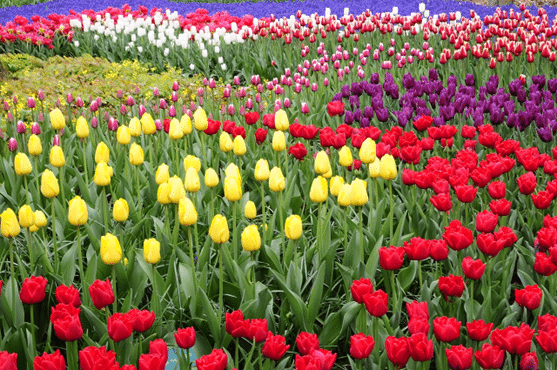
The Netherlands is renowned for its vibrant tulip season, Tulip Garden Amsterdam where the landscape bursts into a kaleidoscope of colors. From the iconic tulip gardens in Amsterdam to the sprawling fields in the countryside, this enchanting season attracts visitors from around the world. In this comprehensive guide, we’ll explore everything you need to know about experiencing the beauty of tulip season in the Netherlands.
1. Introduction
The Netherlands is synonymous with tulips, and the country’s tulip season is a sight to behold. From mid-March to mid-May, the landscape transforms into a tapestry of vibrant colors as millions of tulips bloom across the region. Whether you’re a nature lover, a photography enthusiast, or simply someone seeking beauty and tranquility, experiencing tulip season in the Netherlands is an unforgettable journey.
2. The Significance of Tulips in Dutch Culture
Tulips hold a special place in Dutch culture and history. Introduced to the Netherlands in the 17th century, tulips quickly became a symbol of wealth and prosperity. During the Dutch Golden Age, the tulip trade boomed, and tulip bulbs were even used as a form of currency. Today, tulips remain an important cultural symbol, representing beauty, diversity, and the arrival of spring.
3. Amsterdam: The Tulip Capital
History of Tulips in Amsterdam
Amsterdam, the capital city of the Netherlands, is the epicenter of tulip mania. The city’s love affair with tulips dates back centuries, and it continues to enchant visitors with its stunning tulip displays. Historically, Amsterdam played a significant role in the tulip trade, attracting merchants and traders from all over the world. The city’s rich history is intertwined with the story of tulips, making it a must-visit destination for tulip enthusiasts.
Keukenhof Gardens: The Jewel of Amsterdam
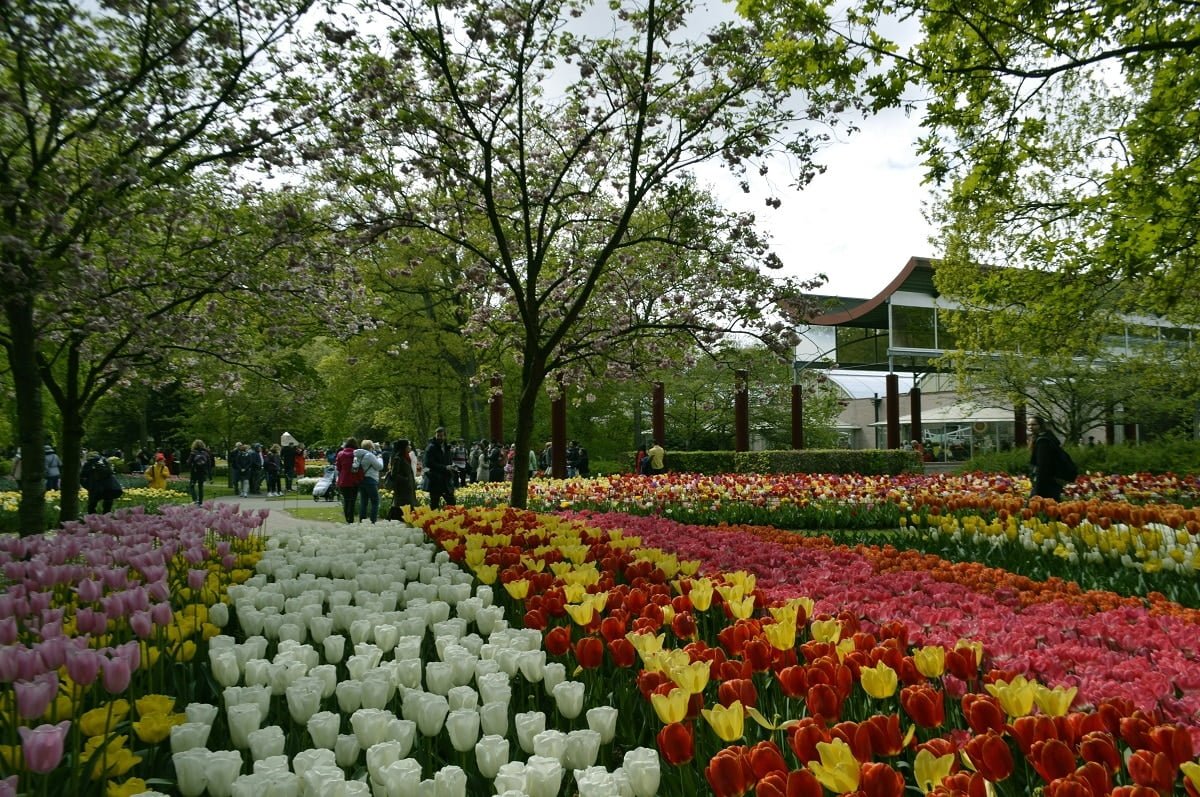
No visit to Amsterdam during tulip season is complete without a trip to the world-famous Keukenhof Gardens. Located in the picturesque town of Lisse, just a short distance from Amsterdam, Keukenhof Gardens is a floral paradise like no other. Spanning over 79 acres, the gardens boast seven million tulips of 800 different varieties, alongside a myriad of other stunning flowers. Visitors can stroll along winding paths, immerse themselves in vibrant displays, and witness the beauty of tulips up close.
Exploring Other Tulip Gardens in Amsterdam
Apart from Keukenhof Gardens, Amsterdam is home to several other noteworthy tulip gardens. Each garden offers a unique experience, showcasing different tulip varieties and innovative floral arrangements. Some popular options include the Van Gogh Museum Gardens, the Rijksmuseum Gardens, and the Hortus Botanicus. These gardens provide an opportunity to appreciate tulips in the heart of the city, surrounded by cultural landmarks and historical treasures.
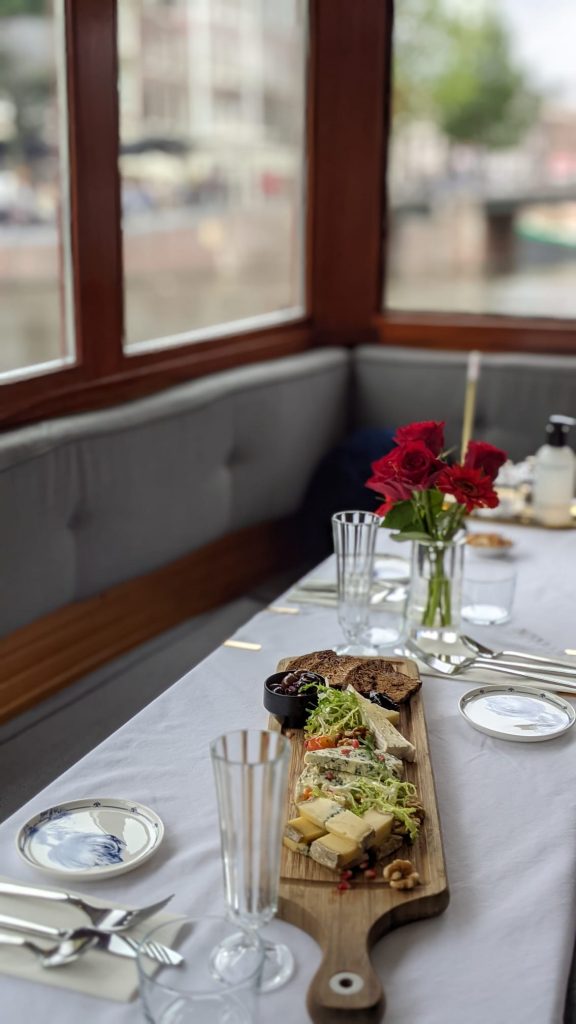
4. Exploring the Tulip Garden Fields in the Netherlands
While Amsterdam is a hub for tulip enthusiasts, the real allure lies in venturing beyond the city and exploring the vast tulip fields that dot the Dutch countryside. These expansive fields stretch as far as the eye can see, offering a breathtaking panorama of colorful blooms. From vibrant reds to delicate pinks and sunny yellows, the tulip fields showcase nature’s artistry in its purest form.
The Breathtaking Beauty of the Dutch Countryside
Venturing into the Dutch countryside during tulip season is like stepping into a fairytale. Rolling hills, picturesque canals, and windmills create a picturesque backdrop for the vibrant tulip fields. Exploring this idyllic landscape is a sensory experience, with the scent of flowers in the air and the vibrant colors dancing in the sunlight. It’s a paradise for nature lovers and photographers alike.
Best Time to Visit the Tulip Garden Fields
Timing is crucial when planning a visit to the tulip fields. The blooming period varies each year, depending on weather conditions, but generally, mid-April to early May is considered the prime time to witness the tulip fields in full bloom. However, it’s essential to keep an eye on the flower updates and consult local sources to ensure you catch the tulips at their peak.
Famous Tulip Fields and Gardens near Amsterdam
There are several famous tulip fields near Amsterdam that are worth exploring. The Keukenhof region, where the Keukenhof Gardens are located, is home to vast tulip fields that stretch as far as the eye can see. The Lisse region, including the famous Flower Strip, is another hotspot for tulip fields. Additionally, the Noordoostpolder region and the Bollenstreek region offer stunning displays of tulips and other spring flowers.
Tips for Visiting the Tulip Fields
To make the most of your experience in the tulip fields, here are some tips to keep in mind:
- Plan ahead and check the blooming status of the tulips.
- Dress appropriately for the weather and wear comfortable shoes for walking.
- Respect private property and stay on designated paths.
- Consider renting a bike or joining a guided tour for a more immersive experience.
- Capture the beauty of the tulips responsibly, without damaging the flowers or disturbing the fields.
5. Celebrating National Tulip Day in Amsterdam
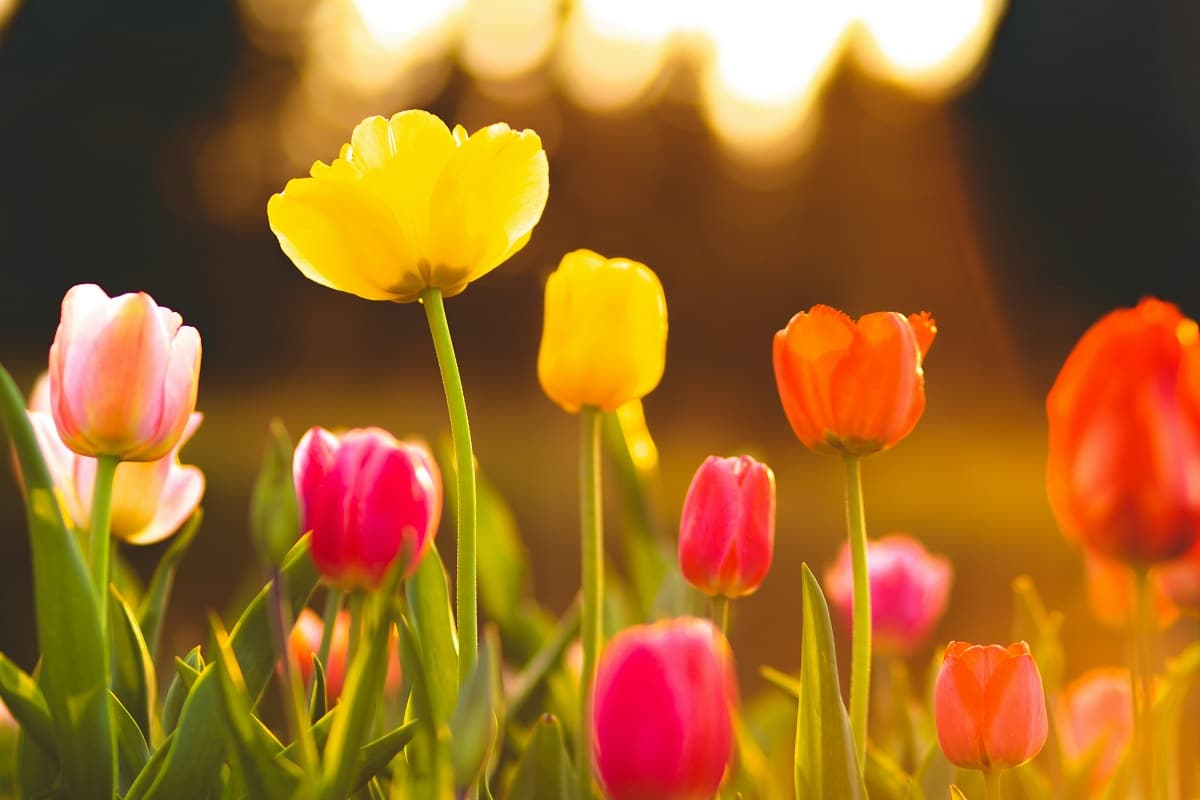
National Tulip Day marks the official start of the tulip season in the Netherlands and is celebrated with great enthusiasm in Amsterdam. Held on the third Saturday of January, this vibrant event attracts thousands of visitors who gather in Dam Square to witness the creation of a massive tulip garden.
A Festive Start to Tulip Season
National Tulip Day is a festive affair, with the square transformed into a sea of tulips. Over 200,000 tulips are placed in a specially designed garden, creating a breathtaking spectacle. Visitors have the opportunity to handpick tulips for free, creating their own bouquet as a symbol of the arrival of spring. It’s a joyous event that brings locals and tourists together to celebrate the beauty of tulips.
The Dam Square Tulip Garden
The Dam Square Tulip Garden is the centerpiece of National Tulip Day. The garden is meticulously designed, with tulips arranged in intricate patterns and vibrant color combinations. It serves as a visual representation of the Netherlands’ rich horticultural heritage and showcases the diversity of tulip varieties. The garden attracts visitors of all ages, who come to marvel at the stunning display and participate in the festivities.
Participating in Tulip Day Festivities
In addition to admiring the tulip garden, visitors can enjoy a range of activities and events organized throughout the day. These include live music performances, cultural exhibitions, and interactive workshops. Food stalls offering traditional Dutch treats and tulip-themed merchandise add to the festive atmosphere. It’s a day filled with joy, camaraderie, and the anticipation of the vibrant tulip season ahead.
6. Tulip Festivals in the Netherlands
Tulip festivals are a highlight of the spring season in the Netherlands. These events showcase the beauty of tulips in various forms, including flower parades, art exhibitions, and themed displays. Here are some notable tulip festivals that shouldn’t be missed:
Bloemencorso: The Flower Parade
The Bloemencorso, or Flower Parade, is a dazzling spectacle that takes place in different cities across the Netherlands. Floats adorned with intricate floral arrangements parade through the streets, creating a mesmerizing display of colors and creativity. Each float is meticulously decorated with millions of flowers, including tulips, daffodils, and hyacinths. The Flower Parade is a feast for the eyes and a celebration of Dutch craftsmanship and horticultural expertise.
The Tulip Festival in Amsterdam
The Tulip Festival in Amsterdam is a month-long celebration of tulips, taking place throughout the city. From public parks to iconic landmarks, Amsterdam is transformed into a living canvas of tulip displays. Various events and activities are organized, including guided walks, bike tours, and art exhibitions. Visitors have the opportunity to immerse themselves in the world of tulips and experience their beauty in different settings.
Other Notable Tulip Festivals in the Netherlands
Apart from the Bloemencorso and the Tulip Garden Festival in Amsterdam, there are several other tulip festivals worth exploring. The Flower Parade of the Bollenstreek, held between Noordwijk and Haarlem, is one of the most famous flower parades in the country. The Aalsmeer Flower Festival, held in the world’s largest flower auction, showcases the diversity of Dutch horticulture. These festivals offer a unique perspective on the importance of tulips in Dutch culture and provide a delightful experience for visitors.
7. Planning Your Visit to Tulip Season in the Netherlands
Planning a trip to experience tulip season in the Netherlands requires careful consideration of several factors. From timing your visit to arranging transportation and accommodation, here’s a comprehensive guide to help you plan your trip.
Timings and Duration of Tulip Season
Tulip season in the Netherlands typically begins in mid-March and lasts until mid-May. However, the exact blooming period can vary each year depending on weather conditions. To ensure you catch the tulips at their peak, it’s advisable to check local sources and flower updates. The blooming period can be divided into early, mid, and late season, each offering a unique display of tulip varieties.
Getting to the Netherlands
The Netherlands is well-connected to major international airports, making it easily accessible from around the world. Amsterdam Airport Schiphol is the country’s primary international airport and serves as a hub for various airlines. From the airport, you can reach Amsterdam city center and other destinations within the country via public transportation or taxis.
Accommodation Options
The Netherlands offers a wide range of accommodation options to suit every budget and preference. From luxury hotels to cozy bed and breakfasts, there are plenty of choices available. In Amsterdam, consider staying in the city center to be close to major attractions and transportation hubs. If you prefer a more serene experience, opt for accommodations in the countryside, closer to the tulip fields.
Transportation within the Country
The Netherlands has a well-developed transportation network, making it easy to travel within the country. The Dutch Railways (NS) provides excellent train connections to major cities and towns, including Amsterdam, Rotterdam, and The Hague. Buses and trams are also available for local transportation within cities. Renting a bike is a popular option for exploring Amsterdam and the countryside, offering a unique and environmentally friendly way to experience the tulips.
Weather and Clothing Tips
The weather in the Netherlands during tulip season can be unpredictable, with temperatures ranging from cool to mild. It’s advisable to dress in layers, as the temperature can vary throughout the day. A waterproof jacket or umbrella is essential, as spring showers are common. Comfortable walking shoes are a must, especially if you plan to explore the tulip fields or gardens.
8. Must-See Attractions in Amsterdam
While tulips steal the spotlight during the spring season, Amsterdam has much more to offer. The city is brimming with cultural landmarks, world-class museums, and unique experiences. Here are some must-see attractions to add to your itinerary:
Van Gogh Museum
The Van Gogh Museum houses the largest collection of artworks by Vincent van Gogh. It provides a comprehensive overview of the artist’s life and works, showcasing his iconic masterpieces such as “Sunflowers” and “Starry Night.” The museum offers a profound insight into the artistic journey of one of the most influential painters in history.
Anne Frank House
The Anne Frank House is a poignant reminder of the atrocities of World War II. It is the actual house where Anne Frank and her family hid from the Nazis during the war. The museum provides a glimpse into Anne’s life through her diary and exhibits that chronicle the history of the Holocaust. Visiting the Anne Frank House is a profoundly moving experience that serves as a testament to the resilience of the human spirit.
Rijksmuseum
The Rijksmuseum is the Netherlands’ largest art museum, housing a vast collection of Dutch masterpieces from the Middle Ages to the present day. The museum’s most famous artwork is Rembrandt’s “The Night Watch,” considered one of the greatest paintings in Western art history. From Vermeer’s “The Milkmaid” to Frans Hals’ lively portraits, the Rijksmuseum offers a comprehensive journey through Dutch art and history.
Heineken Experience
Beer enthusiasts shouldn’t miss the Heineken Experience, an interactive museum located in the former Heineken brewery. The museum takes visitors on a journey through the history of Heineken, offering insights into the brewing process and the brand’s global influence. The highlight of the experience is a tasting session, where visitors can savor the flavors of Heineken’s iconic brews.
Canal Cruises
Exploring Amsterdam’s iconic canals is a quintessential part of any visit to the city. Canal cruises offer a unique perspective, allowing you to admire the city’s architecture and landmarks from the water. Whether you choose a leisurely daytime cruise or a romantic candlelit evening cruise, the canals provide a tranquil escape from the bustling city streets.
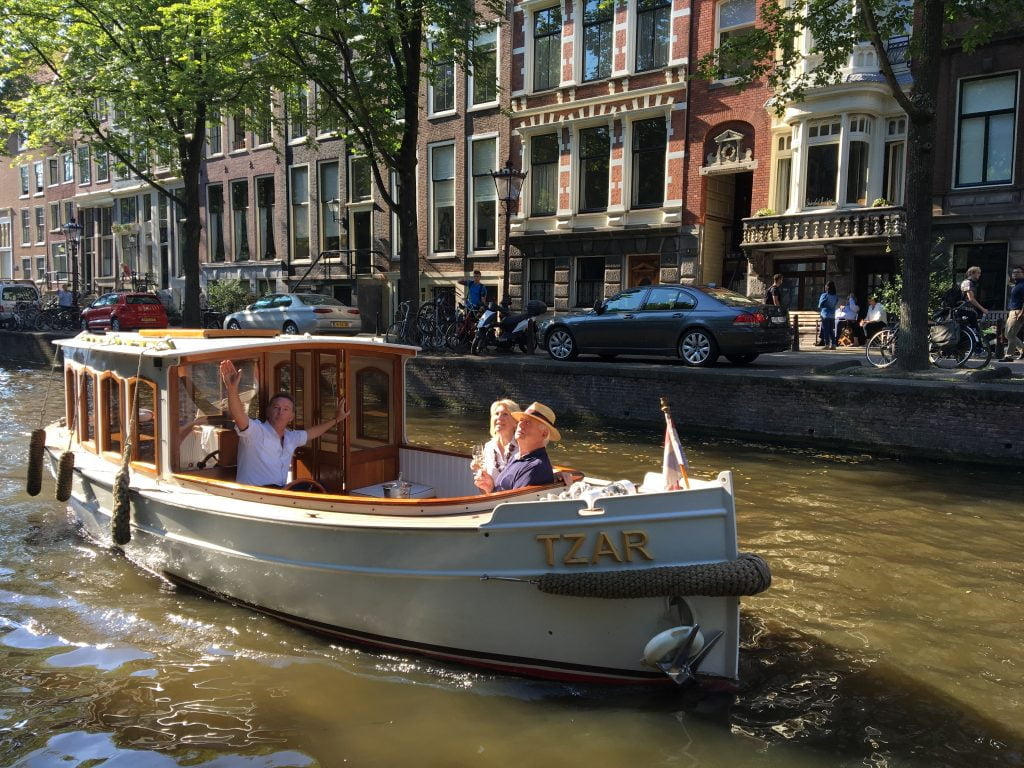
9. Exploring Dutch Culture Beyond Tulips
While tulips are synonymous with Dutch culture, there’s much more to explore beyond the floral beauty. Dutch culture is rich and diverse, with unique traditions, historical landmarks, and culinary delights. Here are some experiences that offer a deeper understanding of Dutch culture:
Windmills: Iconic Symbols of the Netherlands
Windmills are an iconic symbol of the Netherlands and a testament to the country’s engineering prowess. These charming structures can be found throughout the Dutch countryside, serving various purposes such as grinding grain, pumping water, and sawing timber. Visiting a windmill allows you to witness the ingenuity of Dutch craftsmanship and learn about their historical significance.
Dutch Cheese Markets
Cheese lovers will delight in the traditional Dutch cheese markets. These vibrant markets, held in towns like Alkmaar and Gouda, offer a unique spectacle where cheese is traded using traditional methods. Visitors can witness the weighing and bargaining of giant wheels of cheese, learn about the cheese-making process, and sample a variety of delicious Dutch cheeses.
Biking in the Netherlands
The Netherlands is famous for its bike-friendly infrastructure, making it an ideal destination for cycling enthusiasts. Exploring Amsterdam and the countryside on two wheels allows you to immerse yourself in the local culture and experience the country’s natural beauty up close. Renting a bike and joining a guided tour is a popular option, providing insights into the history, architecture, and hidden gems of the places you visit.
Traditional Dutch Cuisine
No visit to the Netherlands is complete without indulging in traditional Dutch cuisine. From hearty stews and delicious pancakes to mouthwatering herring and stroopwafels, Dutch cuisine offers a range of flavors and culinary delights. Exploring local markets and trying traditional dishes is an excellent way to experience the authentic flavors of the Netherlands.
10. Tips for Capturing Stunning Tulip Photos
For photography enthusiasts, tulip season in the Netherlands presents endless opportunities to capture stunning shots. Here are some tips to help you capture the beauty of tulips in all their glory:
Equipment and Gear
To capture the vibrant colors and intricate details of tulips, invest in a good quality camera with interchangeable lenses. A macro lens is particularly useful for capturing close-up shots of individual flowers. A tripod can be handy for stability, especially when shooting in low light conditions or for long exposures.
Composition and Framing
Experiment with different compositions and perspectives to create visually compelling images. Look for interesting angles, leading lines, and patterns within the tulip fields. Pay attention to the background and use it to enhance the overall composition. Incorporating elements such as windmills, canals, or people can add depth and context to your images.
Lighting and Timing
The quality of light can greatly impact the mood and atmosphere of your tulip photos. Avoid shooting in harsh midday sunlight, as it can create harsh shadows and wash out the colors. Instead, aim for softer lighting during the golden hour (early morning or late afternoon) for a warm, diffused glow. Overcast days can also provide beautiful soft light that brings out the colors of the tulips.
Editing and Post-Processing
Once you’ve captured your tulip photos, post-processing can help enhance the colors and bring out the details. Use editing software such as Adobe Lightroom or Photoshop to adjust exposure, contrast, and colors. Be mindful not to over-process your images, as natural-looking photos often have more impact.
11. Sustainable Tourism Practices in the Netherlands
As visitors flock to witness the beauty of tulip season in the Netherlands, it’s essential to practice sustainable tourism to preserve this natural wonder for future generations. Here are some sustainable tourism practices to keep in mind:
Eco-Friendly Transportation Options
Opt for eco-friendly transportation options when exploring the Netherlands. Utilize public transportation, such as trains and buses, which have lower carbon emissions compared to private vehicles. Consider renting a bike for shorter distances, as it promotes a healthier and more sustainable way of getting around.
Responsible Tulip Field Visits
When visiting the tulip fields, respect the environment and follow designated paths. Avoid trampling or picking the flowers, as it can damage the delicate blooms and disrupt the ecosystem. Refrain from leaving any litter behind and dispose of waste appropriately. Be mindful of the farmers and their property, as the tulip fields are their livelihood.
Supporting Local Communities
Support local businesses and artisans by purchasing souvenirs, food, and services from local establishments. This helps to contribute to the local economy and ensure the continued preservation of Dutch culture. Consider visiting smaller, lesser-known tulip gardens and farms, as they often rely on tourism to sustain their operations.
12. Conclusion
Tulip season in the Netherlands is a magical time when the country comes alive with vibrant colors and fragrant blooms. From the world-famous tulip gardens in Amsterdam to the sprawling fields in the countryside, the beauty of tulips is a sight to behold. By planning your visit, exploring Dutch culture beyond tulips, and practicing sustainable tourism, you can make the most of this enchanting season and create memories that will last a lifetime.
